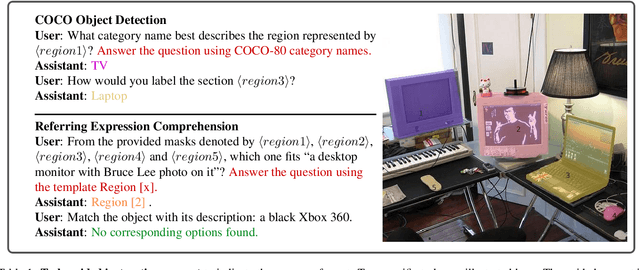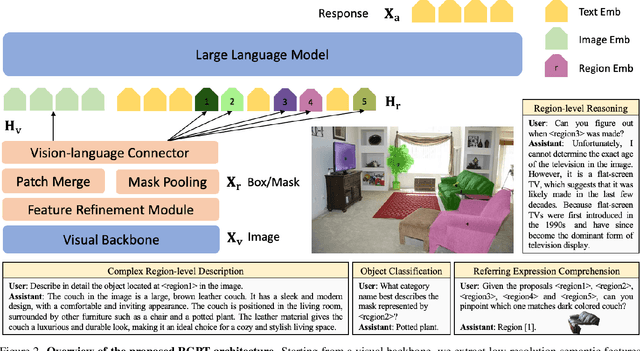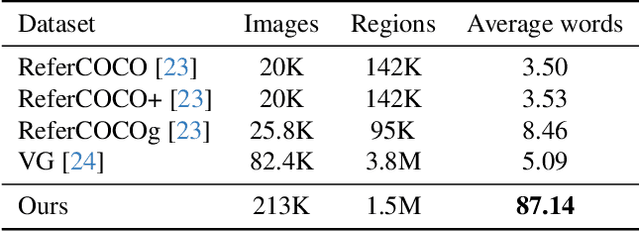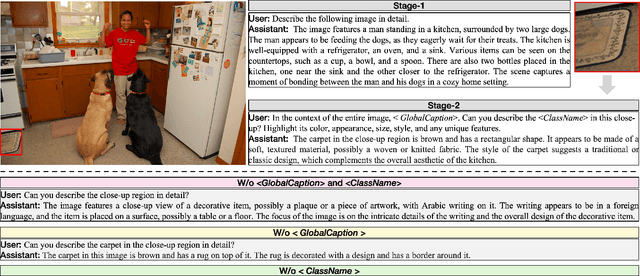Wonmin Byeon
NVIDIA Nemotron Nano 2: An Accurate and Efficient Hybrid Mamba-Transformer Reasoning Model
Aug 21, 2025



Abstract:We introduce Nemotron-Nano-9B-v2, a hybrid Mamba-Transformer language model designed to increase throughput for reasoning workloads while achieving state-of-the-art accuracy compared to similarly-sized models. Nemotron-Nano-9B-v2 builds on the Nemotron-H architecture, in which the majority of the self-attention layers in the common Transformer architecture are replaced with Mamba-2 layers, to achieve improved inference speed when generating the long thinking traces needed for reasoning. We create Nemotron-Nano-9B-v2 by first pre-training a 12-billion-parameter model (Nemotron-Nano-12B-v2-Base) on 20 trillion tokens using an FP8 training recipe. After aligning Nemotron-Nano-12B-v2-Base, we employ the Minitron strategy to compress and distill the model with the goal of enabling inference on up to 128k tokens on a single NVIDIA A10G GPU (22GiB of memory, bfloat16 precision). Compared to existing similarly-sized models (e.g., Qwen3-8B), we show that Nemotron-Nano-9B-v2 achieves on-par or better accuracy on reasoning benchmarks while achieving up to 6x higher inference throughput in reasoning settings like 8k input and 16k output tokens. We are releasing Nemotron-Nano-9B-v2, Nemotron-Nano12B-v2-Base, and Nemotron-Nano-9B-v2-Base checkpoints along with the majority of our pre- and post-training datasets on Hugging Face.
Eagle 2.5: Boosting Long-Context Post-Training for Frontier Vision-Language Models
Apr 21, 2025Abstract:We introduce Eagle 2.5, a family of frontier vision-language models (VLMs) for long-context multimodal learning. Our work addresses the challenges in long video comprehension and high-resolution image understanding, introducing a generalist framework for both tasks. The proposed training framework incorporates Automatic Degrade Sampling and Image Area Preservation, two techniques that preserve contextual integrity and visual details. The framework also includes numerous efficiency optimizations in the pipeline for long-context data training. Finally, we propose Eagle-Video-110K, a novel dataset that integrates both story-level and clip-level annotations, facilitating long-video understanding. Eagle 2.5 demonstrates substantial improvements on long-context multimodal benchmarks, providing a robust solution to the limitations of existing VLMs. Notably, our best model Eagle 2.5-8B achieves 72.4% on Video-MME with 512 input frames, matching the results of top-tier commercial model such as GPT-4o and large-scale open-source models like Qwen2.5-VL-72B and InternVL2.5-78B.
Nemotron-H: A Family of Accurate and Efficient Hybrid Mamba-Transformer Models
Apr 10, 2025Abstract:As inference-time scaling becomes critical for enhanced reasoning capabilities, it is increasingly becoming important to build models that are efficient to infer. We introduce Nemotron-H, a family of 8B and 56B/47B hybrid Mamba-Transformer models designed to reduce inference cost for a given accuracy level. To achieve this goal, we replace the majority of self-attention layers in the common Transformer model architecture with Mamba layers that perform constant computation and require constant memory per generated token. We show that Nemotron-H models offer either better or on-par accuracy compared to other similarly-sized state-of-the-art open-sourced Transformer models (e.g., Qwen-2.5-7B/72B and Llama-3.1-8B/70B), while being up to 3$\times$ faster at inference. To further increase inference speed and reduce the memory required at inference time, we created Nemotron-H-47B-Base from the 56B model using a new compression via pruning and distillation technique called MiniPuzzle. Nemotron-H-47B-Base achieves similar accuracy to the 56B model, but is 20% faster to infer. In addition, we introduce an FP8-based training recipe and show that it can achieve on par results with BF16-based training. This recipe is used to train the 56B model. All Nemotron-H models will be released, with support in Hugging Face, NeMo, and Megatron-LM.
Token-Efficient Long Video Understanding for Multimodal LLMs
Mar 06, 2025Abstract:Recent advances in video-based multimodal large language models (Video-LLMs) have significantly improved video understanding by processing videos as sequences of image frames. However, many existing methods treat frames independently in the vision backbone, lacking explicit temporal modeling, which limits their ability to capture dynamic patterns and efficiently handle long videos. To address these limitations, we introduce STORM (\textbf{S}patiotemporal \textbf{TO}ken \textbf{R}eduction for \textbf{M}ultimodal LLMs), a novel architecture incorporating a dedicated temporal encoder between the image encoder and the LLM. Our temporal encoder leverages the Mamba State Space Model to integrate temporal information into image tokens, generating enriched representations that preserve inter-frame dynamics across the entire video sequence. This enriched encoding not only enhances video reasoning capabilities but also enables effective token reduction strategies, including test-time sampling and training-based temporal and spatial pooling, substantially reducing computational demands on the LLM without sacrificing key temporal information. By integrating these techniques, our approach simultaneously reduces training and inference latency while improving performance, enabling efficient and robust video understanding over extended temporal contexts. Extensive evaluations show that STORM achieves state-of-the-art results across various long video understanding benchmarks (more than 5\% improvement on MLVU and LongVideoBench) while reducing the computation costs by up to $8\times$ and the decoding latency by 2.4-2.9$\times$ for the fixed numbers of input frames. Project page is available at https://research.nvidia.com/labs/lpr/storm
Feature-based Graph Attention Networks Improve Online Continual Learning
Feb 13, 2025Abstract:Online continual learning for image classification is crucial for models to adapt to new data while retaining knowledge of previously learned tasks. This capability is essential to address real-world challenges involving dynamic environments and evolving data distributions. Traditional approaches predominantly employ Convolutional Neural Networks, which are limited to processing images as grids and primarily capture local patterns rather than relational information. Although the emergence of transformer architectures has improved the ability to capture relationships, these models often require significantly larger resources. In this paper, we present a novel online continual learning framework based on Graph Attention Networks (GATs), which effectively capture contextual relationships and dynamically update the task-specific representation via learned attention weights. Our approach utilizes a pre-trained feature extractor to convert images into graphs using hierarchical feature maps, representing information at varying levels of granularity. These graphs are then processed by a GAT and incorporate an enhanced global pooling strategy to improve classification performance for continual learning. In addition, we propose the rehearsal memory duplication technique that improves the representation of the previous tasks while maintaining the memory budget. Comprehensive evaluations on benchmark datasets, including SVHN, CIFAR10, CIFAR100, and MiniImageNet, demonstrate the superiority of our method compared to the state-of-the-art methods.
Parallel Sequence Modeling via Generalized Spatial Propagation Network
Jan 21, 2025



Abstract:We present the Generalized Spatial Propagation Network (GSPN), a new attention mechanism optimized for vision tasks that inherently captures 2D spatial structures. Existing attention models, including transformers, linear attention, and state-space models like Mamba, process multi-dimensional data as 1D sequences, compromising spatial coherence and efficiency. GSPN overcomes these limitations by directly operating on spatially coherent image data and forming dense pairwise connections through a line-scan approach. Central to GSPN is the Stability-Context Condition, which ensures stable, context-aware propagation across 2D sequences and reduces the effective sequence length to $\sqrt{N}$ for a square map with N elements, significantly enhancing computational efficiency. With learnable, input-dependent weights and no reliance on positional embeddings, GSPN achieves superior spatial fidelity and state-of-the-art performance in vision tasks, including ImageNet classification, class-guided image generation, and text-to-image generation. Notably, GSPN accelerates SD-XL with softmax-attention by over $84\times$ when generating 16K images.
Hymba: A Hybrid-head Architecture for Small Language Models
Nov 20, 2024



Abstract:We propose Hymba, a family of small language models featuring a hybrid-head parallel architecture that integrates transformer attention mechanisms with state space models (SSMs) for enhanced efficiency. Attention heads provide high-resolution recall, while SSM heads enable efficient context summarization. Additionally, we introduce learnable meta tokens that are prepended to prompts, storing critical information and alleviating the "forced-to-attend" burden associated with attention mechanisms. This model is further optimized by incorporating cross-layer key-value (KV) sharing and partial sliding window attention, resulting in a compact cache size. During development, we conducted a controlled study comparing various architectures under identical settings and observed significant advantages of our proposed architecture. Notably, Hymba achieves state-of-the-art results for small LMs: Our Hymba-1.5B-Base model surpasses all sub-2B public models in performance and even outperforms Llama-3.2-3B with 1.32% higher average accuracy, an 11.67x cache size reduction, and 3.49x throughput.
An Empirical Study of Mamba-based Language Models
Jun 12, 2024



Abstract:Selective state-space models (SSMs) like Mamba overcome some of the shortcomings of Transformers, such as quadratic computational complexity with sequence length and large inference-time memory requirements from the key-value cache. Moreover, recent studies have shown that SSMs can match or exceed the language modeling capabilities of Transformers, making them an attractive alternative. In a controlled setting (e.g., same data), however, studies so far have only presented small scale experiments comparing SSMs to Transformers. To understand the strengths and weaknesses of these architectures at larger scales, we present a direct comparison between 8B-parameter Mamba, Mamba-2, and Transformer models trained on the same datasets of up to 3.5T tokens. We also compare these models to a hybrid architecture consisting of 43% Mamba-2, 7% attention, and 50% MLP layers (Mamba-2-Hybrid). Using a diverse set of tasks, we answer the question of whether Mamba models can match Transformers at larger training budgets. Our results show that while pure SSMs match or exceed Transformers on many tasks, they lag behind Transformers on tasks which require strong copying or in-context learning abilities (e.g., 5-shot MMLU, Phonebook) or long-context reasoning. In contrast, we find that the 8B Mamba-2-Hybrid exceeds the 8B Transformer on all 12 standard tasks we evaluated (+2.65 points on average) and is predicted to be up to 8x faster when generating tokens at inference time. To validate long-context capabilities, we provide additional experiments evaluating variants of the Mamba-2-Hybrid and Transformer extended to support 16K, 32K, and 128K sequences. On an additional 23 long-context tasks, the hybrid model continues to closely match or exceed the Transformer on average. To enable further study, we release the checkpoints as well as the code used to train our models as part of NVIDIA's Megatron-LM project.
RegionGPT: Towards Region Understanding Vision Language Model
Mar 04, 2024



Abstract:Vision language models (VLMs) have experienced rapid advancements through the integration of large language models (LLMs) with image-text pairs, yet they struggle with detailed regional visual understanding due to limited spatial awareness of the vision encoder, and the use of coarse-grained training data that lacks detailed, region-specific captions. To address this, we introduce RegionGPT (short as RGPT), a novel framework designed for complex region-level captioning and understanding. RGPT enhances the spatial awareness of regional representation with simple yet effective modifications to existing visual encoders in VLMs. We further improve performance on tasks requiring a specific output scope by integrating task-guided instruction prompts during both training and inference phases, while maintaining the model's versatility for general-purpose tasks. Additionally, we develop an automated region caption data generation pipeline, enriching the training set with detailed region-level captions. We demonstrate that a universal RGPT model can be effectively applied and significantly enhancing performance across a range of region-level tasks, including but not limited to complex region descriptions, reasoning, object classification, and referring expressions comprehension.
MTVG : Multi-text Video Generation with Text-to-Video Models
Dec 07, 2023Abstract:Recently, video generation has attracted massive attention and yielded noticeable outcomes. Concerning the characteristics of video, multi-text conditioning incorporating sequential events is necessary for next-step video generation. In this work, we propose a novel multi-text video generation~(MTVG) by directly utilizing a pre-trained diffusion-based text-to-video~(T2V) generation model without additional fine-tuning. To generate consecutive video segments, visual consistency generated by distinct prompts is necessary with diverse variations, such as motion and content-related transitions. Our proposed MTVG includes Dynamic Noise and Last Frame Aware Inversion which reinitialize the noise latent to preserve visual coherence between videos of different prompts and prevent repetitive motion or contents. Furthermore, we present Structure Guiding Sampling to maintain the global appearance across the frames in a single video clip, where we leverage iterative latent updates across the preceding frame. Additionally, our Prompt Generator allows for arbitrary format of text conditions consisting of diverse events. As a result, our extensive experiments, including diverse transitions of descriptions, demonstrate that our proposed methods show superior generated outputs in terms of semantically coherent and temporally seamless video.Video examples are available in our project page: https://kuai-lab.github.io/mtvg-page.
 Add to Chrome
Add to Chrome Add to Firefox
Add to Firefox Add to Edge
Add to Edge